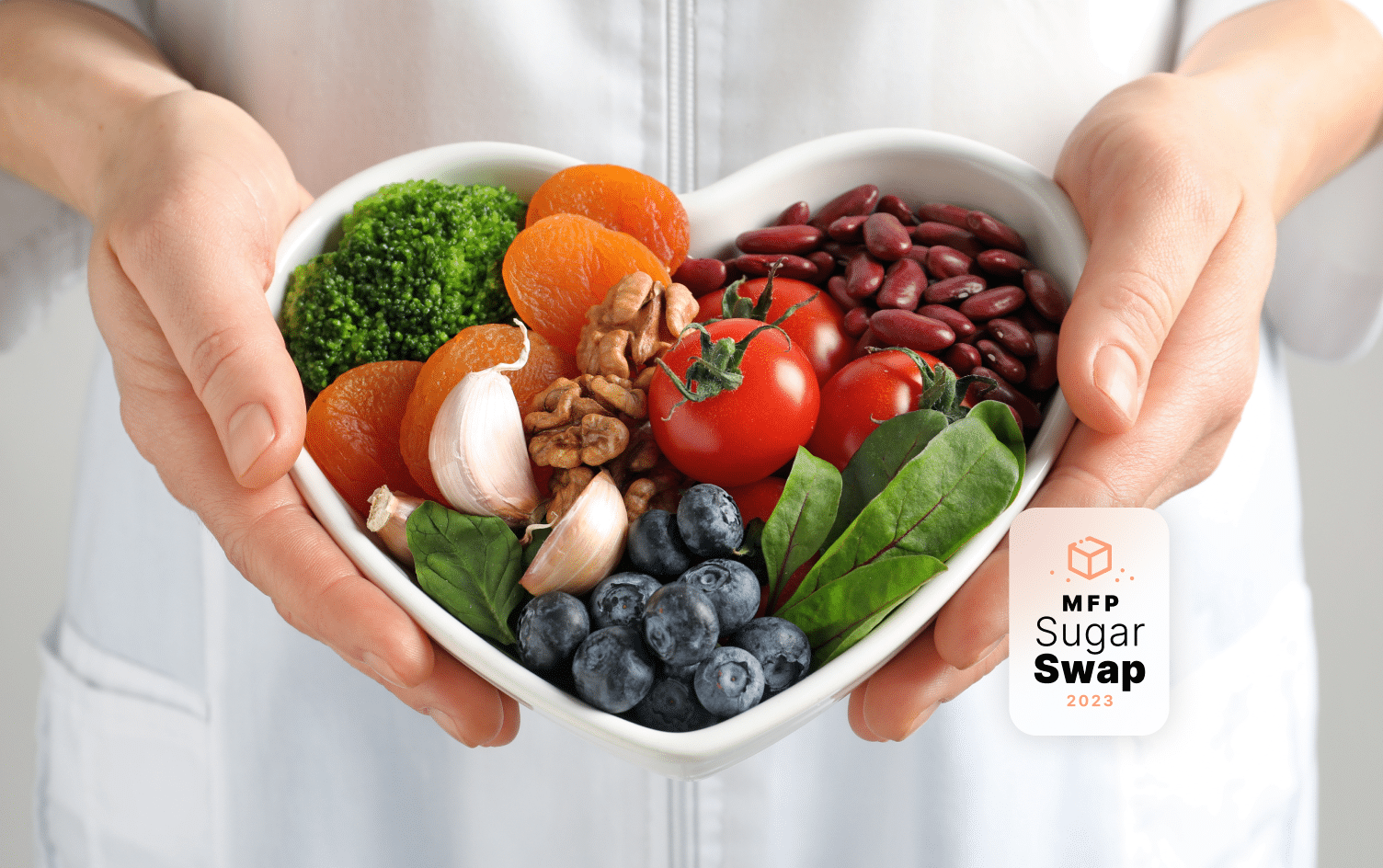February is Heart Health month. Globally, people want to cut the cubes, slash the syrups, and forgo the granules, as sugar tops the list of must-ditch foods this year.
Despite our best intentions, the average person is consuming more than double the amount of their recommended daily sugar intake. Hidden added sugars could be the cause! Some of the foods we eat every day — flavored yogurt, oatmeal, sports drinks, and granola bars — have more sugar than you might expect.
While the human body needs a small amount of sugar, consuming excessive amounts of it can lead to weight gain which has negative health implications for blood pressure and heart disease. Luckily there are some simple steps you can take to reduce the amount of sugar you consume. So, this month, take the #MFPSugarSwap pledge by picking one swap and sticking with it. Check your sugar intake by logging your foods in MyFitnessPal, and then check back again at the end of the month to see the difference — you may be surprised!
In the meantime, here are smart, RD-backed sugar swap ideas that can help.
SMART SUGAR SWAPS TO BOOST HEART HEALTH
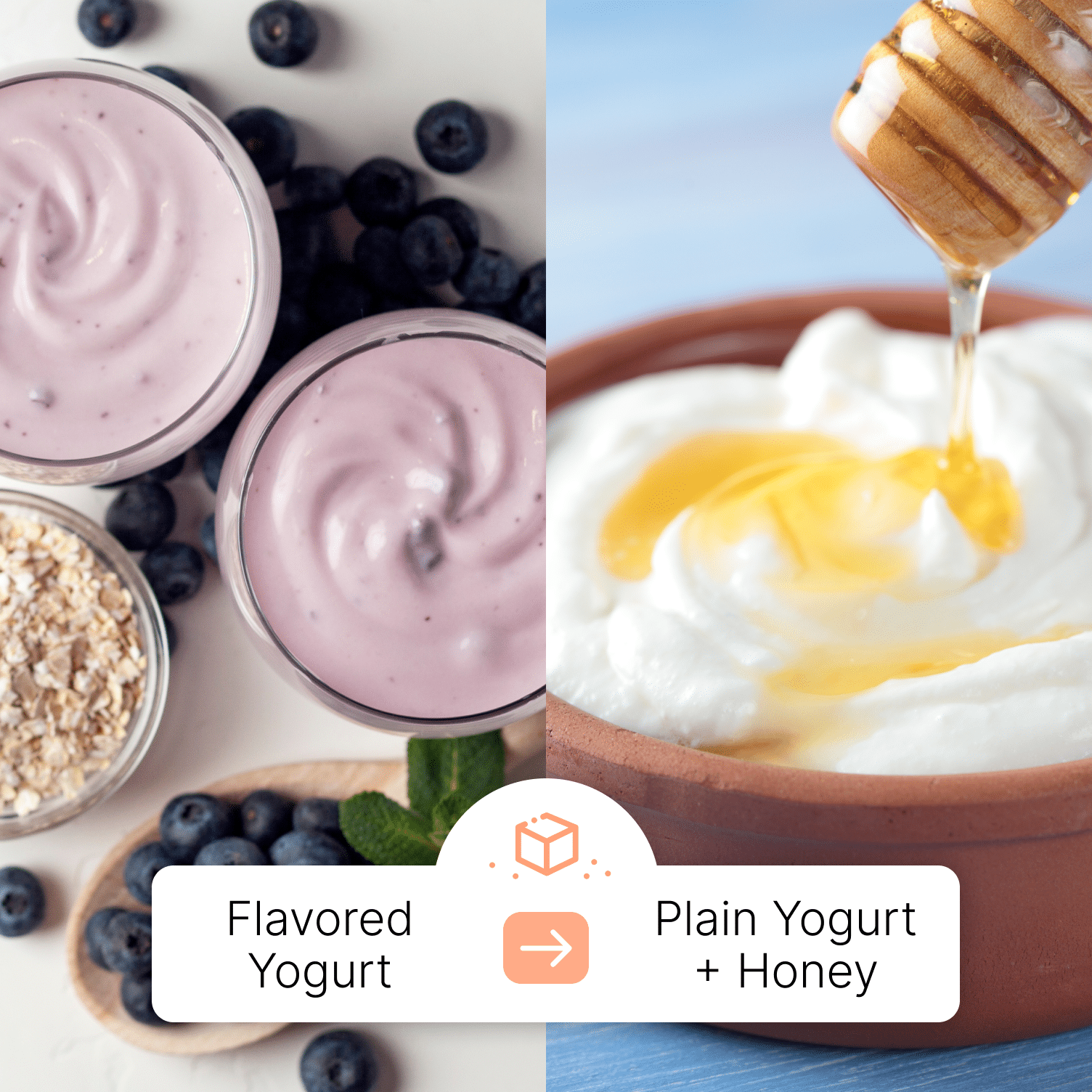
Yogurts with high amounts of added sugar can contain up to 16g in one individual single-serving container. Trade these out for a tsp of honey and ½ cup of chopped fruit for only 6g of added sugar. If you normally consume one yogurt daily (containing 16g of added sugar), and then switched to plain Greek yogurt with a tsp of honey, you could be saving 14,600 calories annually. This adds up to about 4 pounds of sugar lost each year.
16g of added sugar is 64% of a woman’s recommended daily added sugar according to the American Heart Association (AHA), and 44% of a man’s recommended daily added sugar.
These minor changes could lead to a loss of multiple pounds each year and much less added sugar. More importantly, swaps like these lead to a more balanced diet.
Reducing added sugars is particularly important because eating too much of it may lead to increased weight and obesity — often associated with an increased risk of diseases such as type 2 obesity and heart disease.
Hot tip: With this simple swap, you not only reduce sugar intake, but you also increase your fiber, antioxidants, protein, and overall fruit intake.
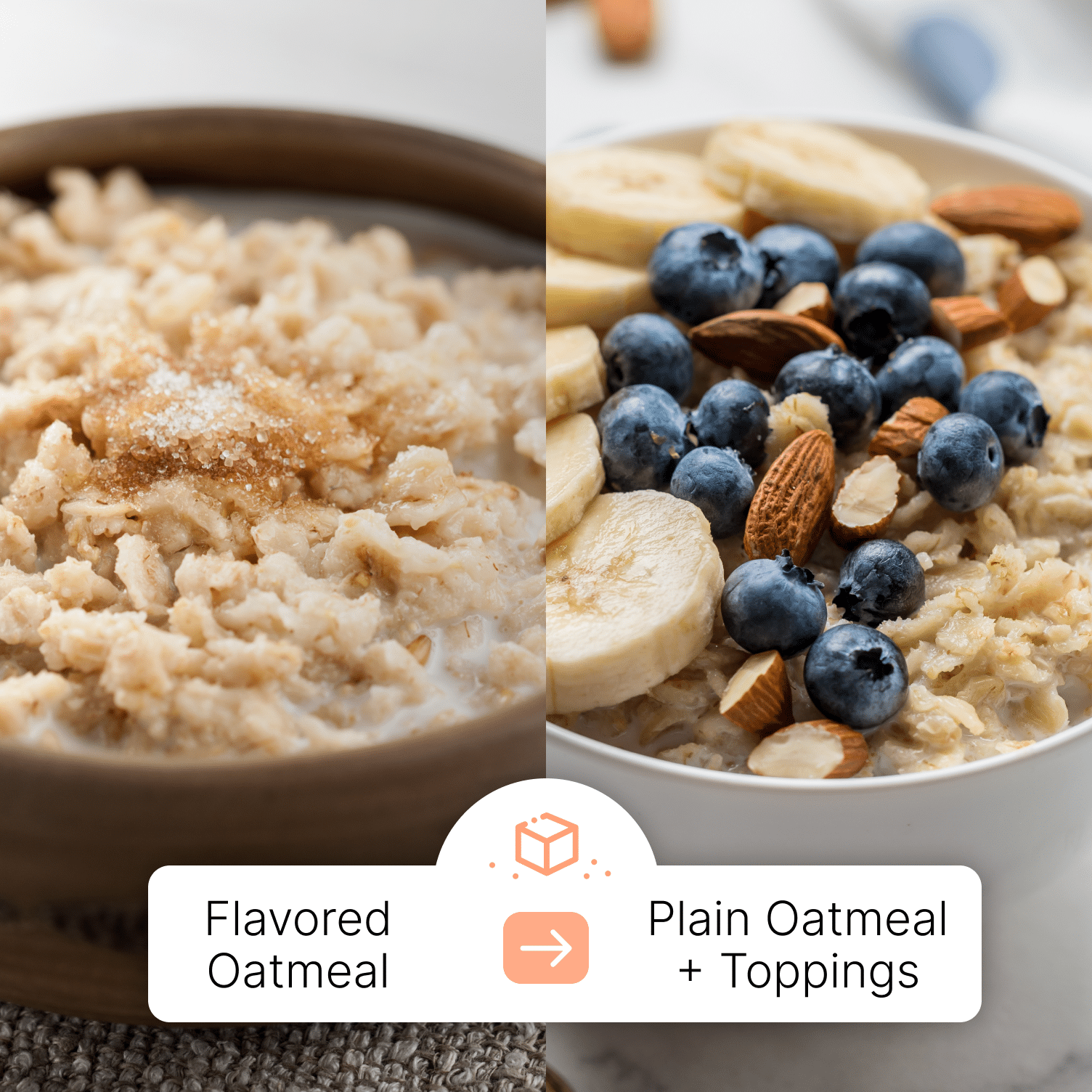
Instant sweetened oatmeal — such as the fan-favorite apple cinnamon flavor — can have up to 11g of added sugar. According to the AHA, this oatmeal would add up to 44% of a woman’s and 30% of a man’s daily added sugar intake.
Hot tip: Replace this with rolled or steel-cut oats with chopped apples and cinnamon for no added sugar.
If you were to make this swap daily for one year, you would reduce your calories by 16,060 from added sugar. This equals about 4.5 lbs of weight lost annually!
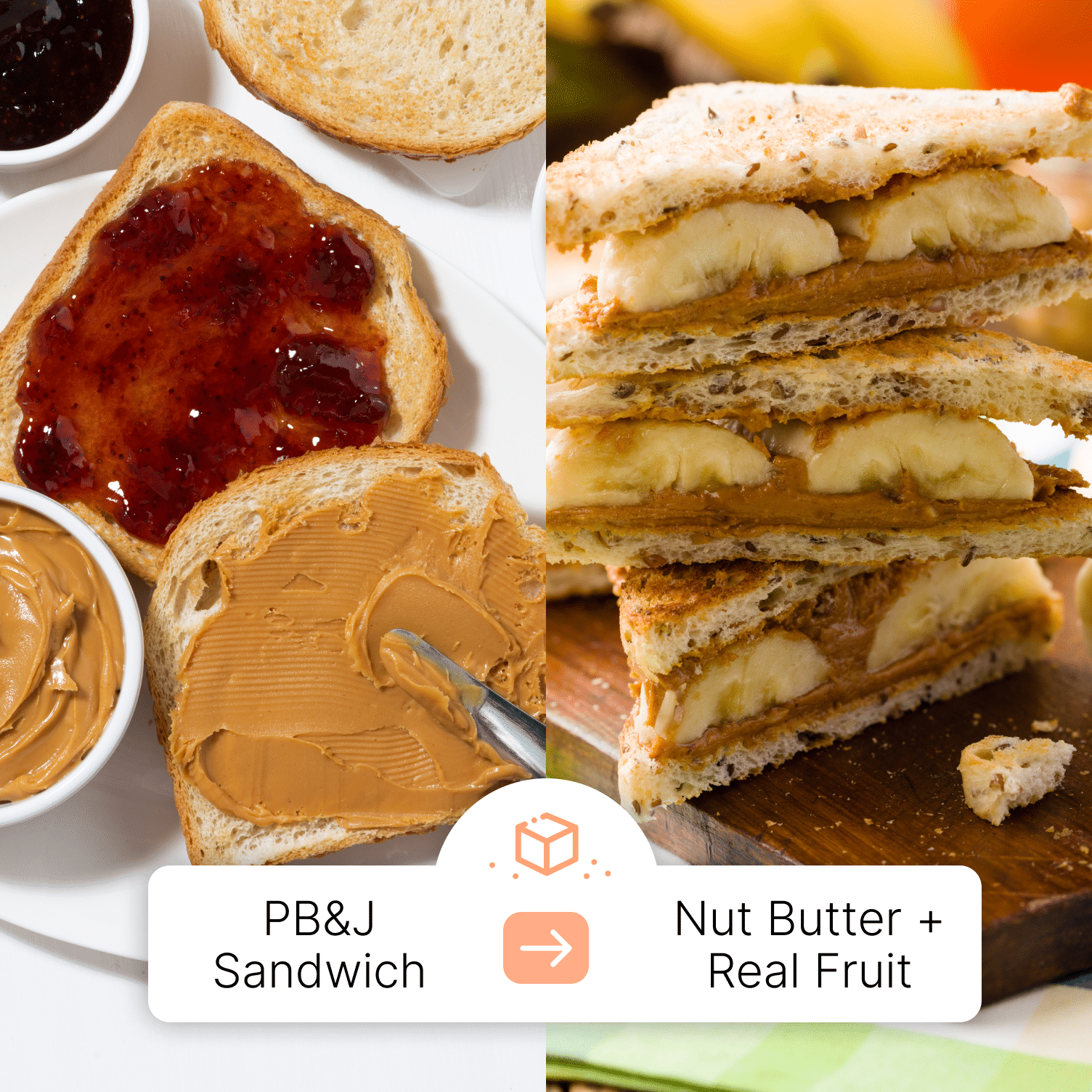
Common peanut butter brands often contain added sugars (~2g) and sweeter jelly’s have up to 10g of added sugar. This totals 12g of added sugar in your PB&J. Swap this out for any nut butter without added sugar and real strawberries. This swap would equal 17,520 calories over one year if done daily, and 5 lbs of weight lost.
Hot tip: Try slicing or even mashing your strawberries to mimic a more traditional jelly.
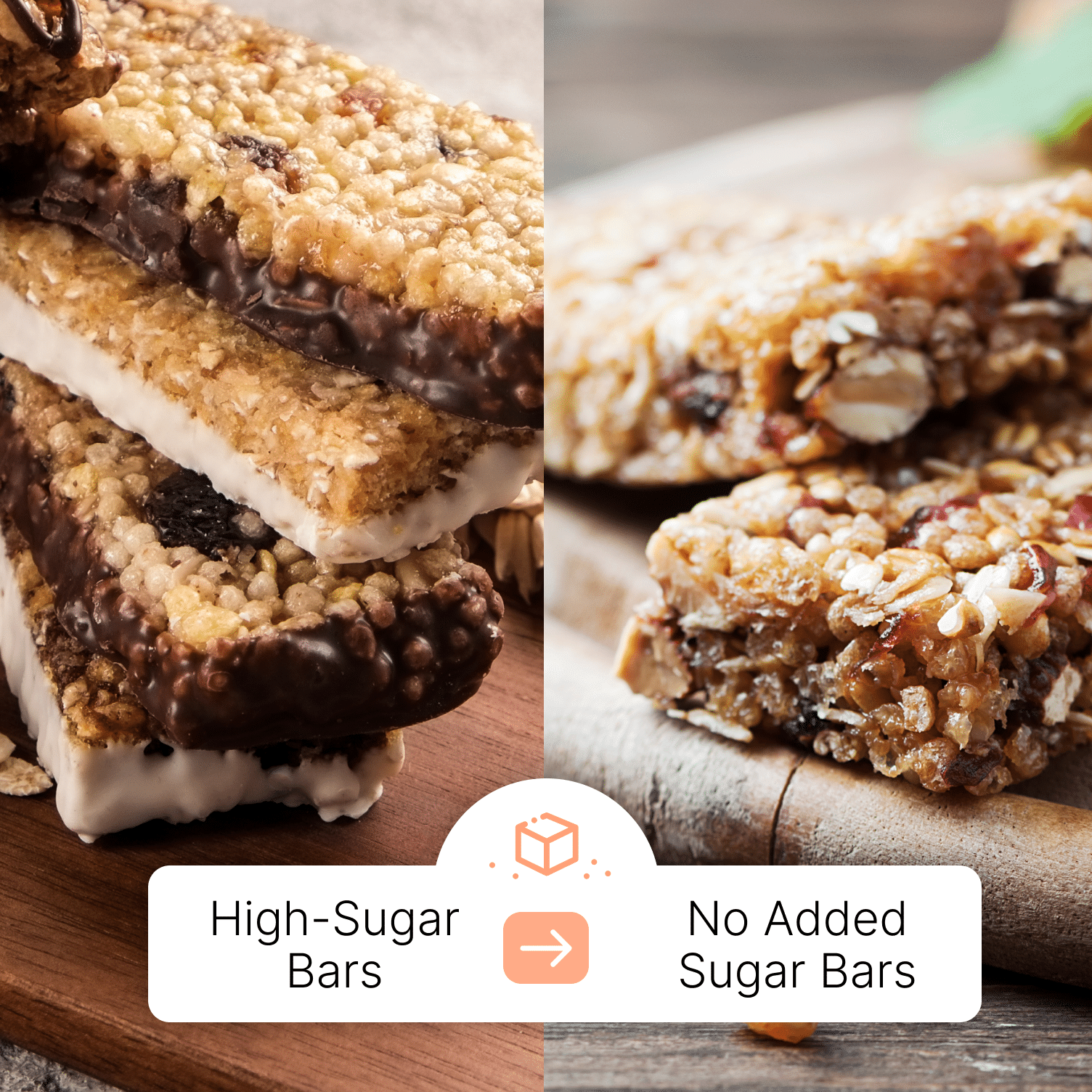
Commonplace snack bars can have up to 14g of added sugar — the equivalent of eating 3.5 sugar cubes!
Hot tip: Try brands like RX, Lara, or Thunderbird bars for no added sugar. If this swap was made daily over one year, it would result in 20,440 fewer calories and about a 6-pound loss in weight.
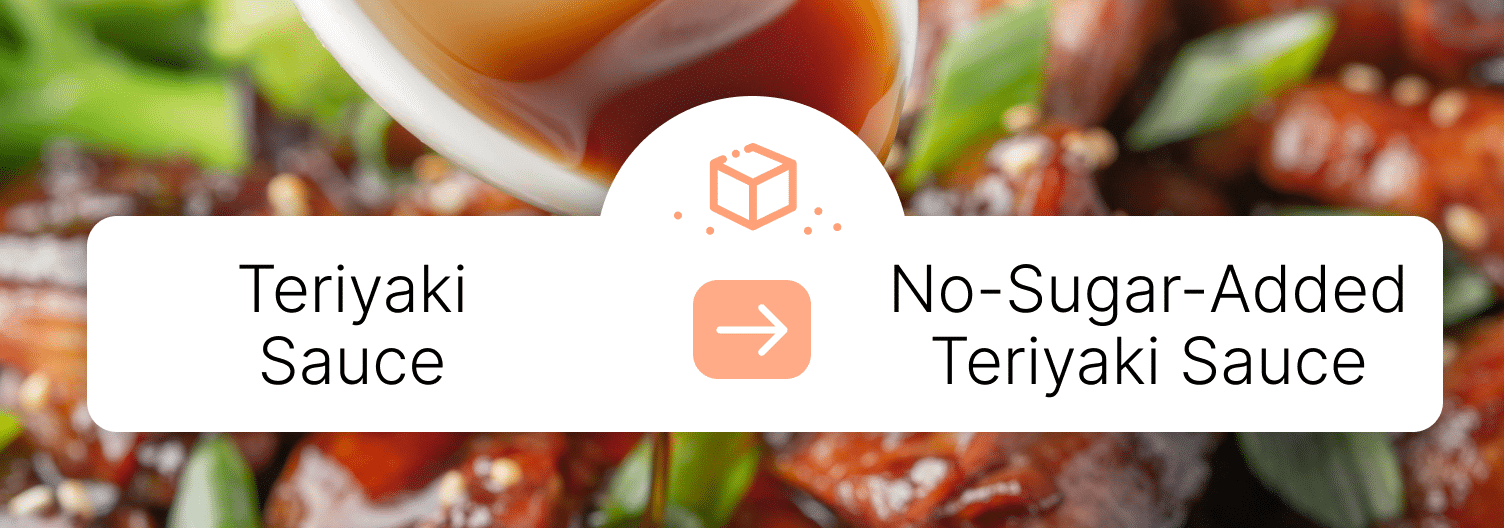
In 1 tbsp of teriyaki sauce, there could be up to 7g of added sugar or about two sugar cubes!
Hot tip: Try Primal Kitchen’s “No Soy Teriyaki Sauce & Marinade” for only 2g per tbsp!

Some leading coffee chains have up to 54g of added sugar in a 16 oz drink — think, caramel frappuccino. This equals 13.5 tsp of sugar. It is also 2 or 1.5 times the amount of added sugar recommended for women and men respectively, according to the AHA.
Hot tip: Instead, try any size of coffee with a tsp of honey for only 6g of added sugar. Or try date syrup where the ingredients only contain dates. Date syrup contains about 4g of sugar in a tsp, all coming from the popular dried fruit.
Making the switch to a hot coffee with a tsp of date syrup daily equals a saving of a whopping 73,000 calories if done daily for a year. This means a weight reduction of about 21 lbs!
If you find yourself at a coffee shop where honey is the offered alternative, you could save 70,080 calories and 20 lbs over a year.

Standard ketchup could have 3-4g of sugar or 1 tbsp. It could be easy to consume 2-3 tbsp with many meals, such as a burger and fries. Try no-sugar-added ketchup, such as the one from Primal Kitchen.
What’s more surprising is that honey mustard can have up to 7g of added sugar for 1 serving (2 tbsp)! Make sure to check the serving size on the nutrition facts label. The serving size can range from 1 tsp, where added sugar is commonly 1g, to 2 tbsp, where added sugar accounts for 5-7g. This is because the serving size is six times larger at 2 tbsp compared to 1 tsp. This means the added sugar intake is similar across many brands, but the serving size varies, making the added sugar seem higher if the serving size is larger.
Hot tip: Try Primal Kitchens honey mustard for only 2g of added sugar for 2 tbsp or simply have a smaller amount (1-2 tsp) of a brand you prefer.
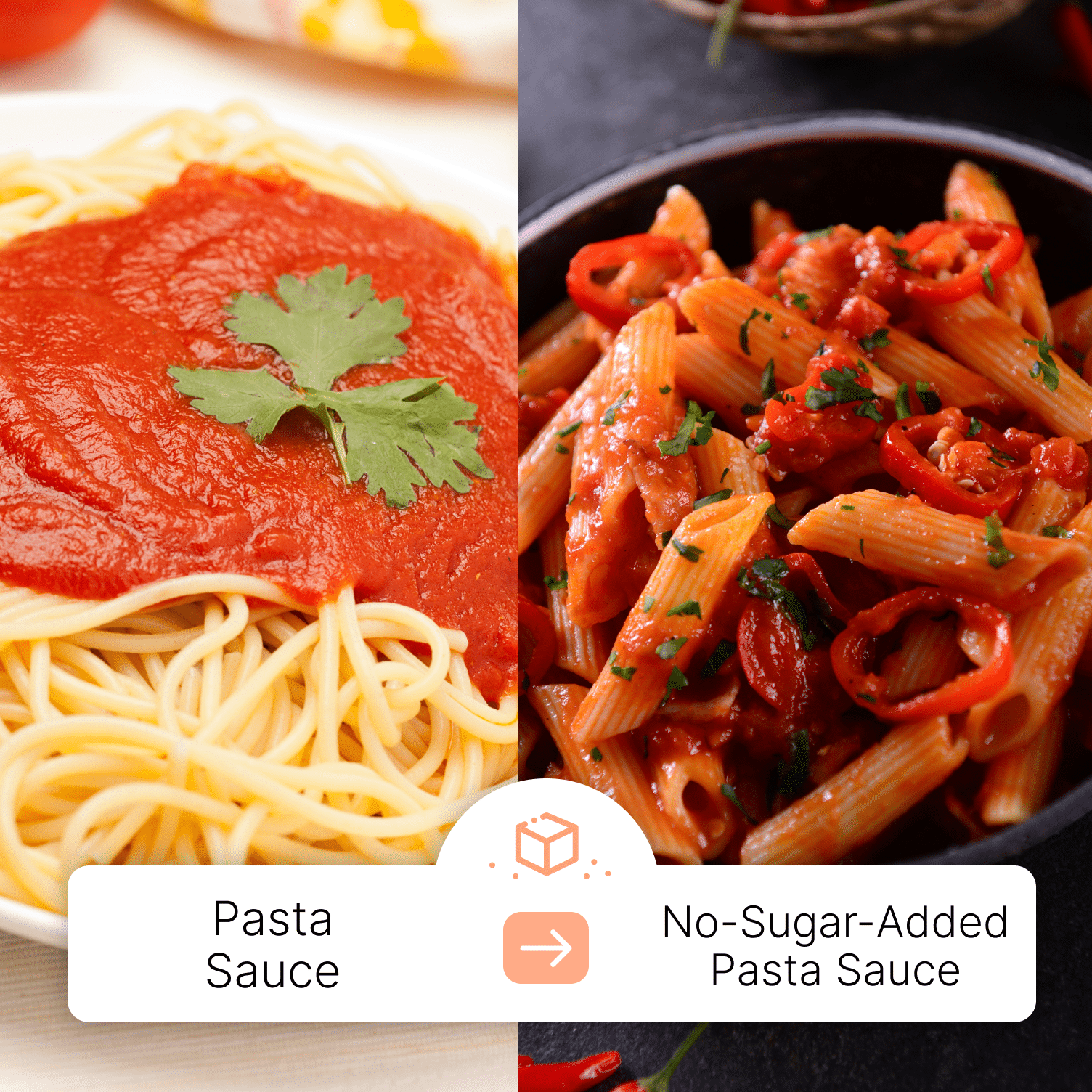
These tend to have about 2-4g for a serving (½ cup). This can add up and can increase your total sugar and refined carbohydrate intake when eaten with traditional pasta and garlic bread. Because this type of meal is mostly refined carbohydrates, it will be digested faster, leading to increased hunger later. Opt for an unsweetened pasta sauce such as Raos and a whole grain pasta, or one with protein such as Banza.
Hot tip: Add additional animal or plant protein with vegetables to balance out the meal and help reduce your consumption of added sugars.
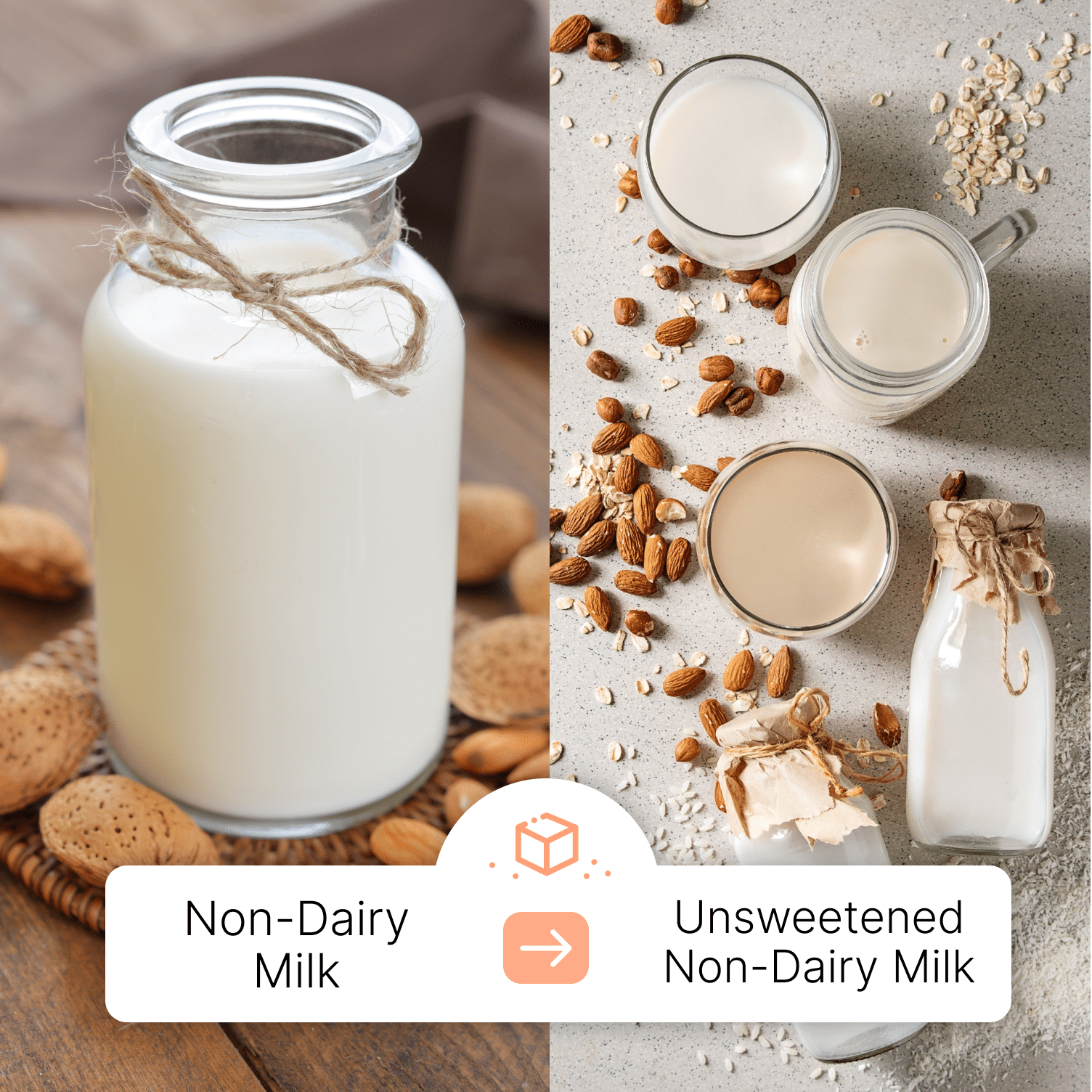
Non-dairy milk (for example, almond, soy or cashew) can have a lot of added sugar if you choose one that is sweetened. The sugar content tends to range from 3g to 13g of added sugar! Make sure to read your labels carefully and select an unsweetened option with 0 added sugar on the nutrition facts label. To learn more about how to read the nutrition facts label, check out this resource from the FDA.
Non-dairy milk and coffee creamers come in either plain or flavored. This includes almond, soy, coconut, oat, and cashew. Any of these might have added sugar in them, even if they are not flavored. Also, flavored non-dairy milk and creamers might be artificially sweetened, so they wouldn’t have any “added sugar” listed on the label! Read the nutrition label to find out if the beverage has added sugar in it.
Hot tip: Choose either plain unsweetened or artificially flavored unsweetened to keep your added sugar intake down.
Making this change daily for a year would mean 18,980 fewer calories from added sugar and about 5.5 lbs lost!
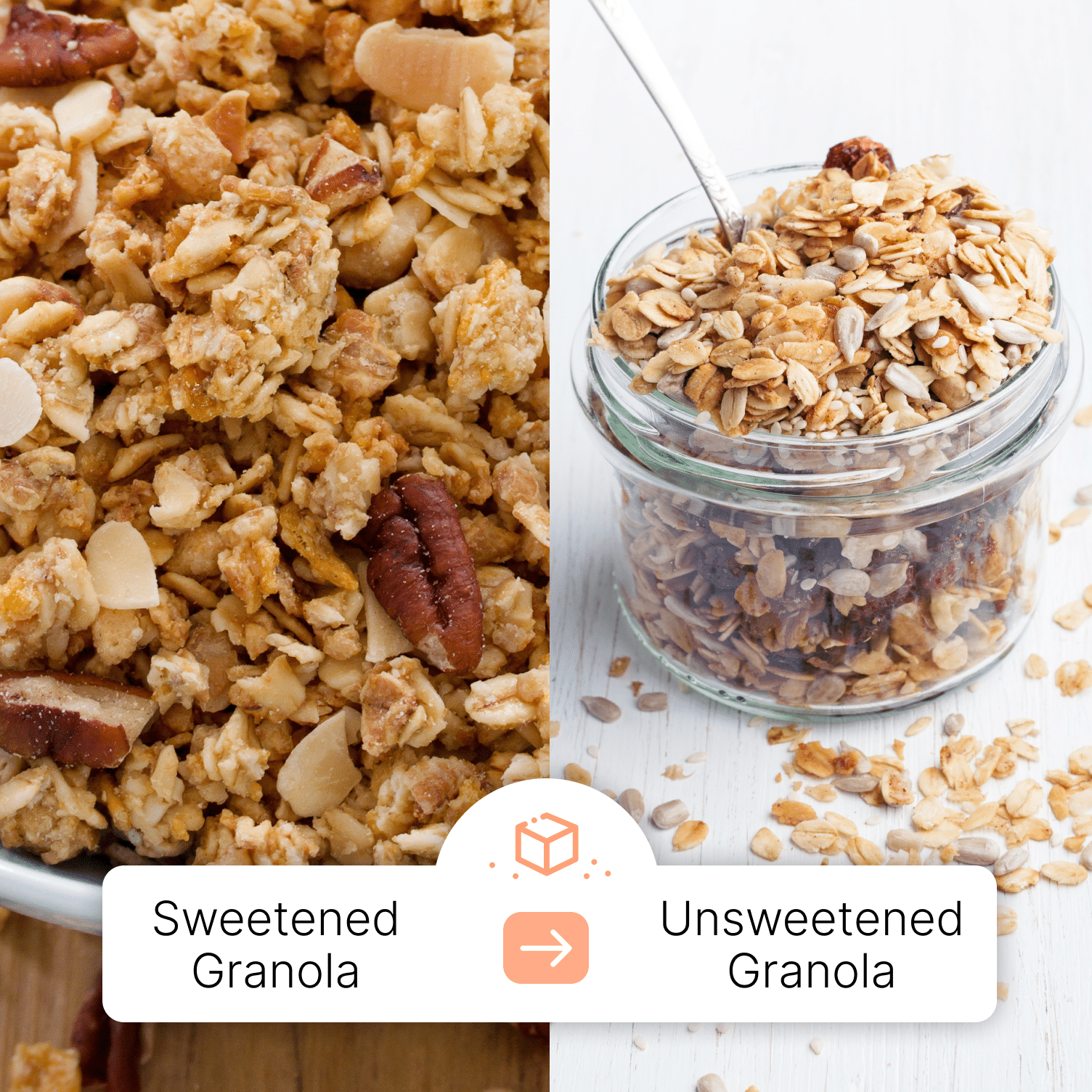
Granola can have a surprising amount of added sugar. If you are eating it as a topping (⅓ cup) or cereal (3/4 cup), added sugar can be 5-6g to 15g or more. Try “Cascadian Farm Organic Granola, No Added Sugar, Coconut Cashew”.
Hot tip: If you are eating granola with a meal, try to make sure there is 6g or less of added sugar in total. Do this by reading the nutrition facts label for each item in your meal.
Simply consuming Cascadian Farm Organic Granola instead of sweeter granola could mean saving up to 21,900 calories over a year or over 6 lbs for the cereal portion!
Of course, there are a few honorable mentions that we didn’t highlight in this blog post. Other common foods with added sugars include graham crackers, canned soup, iced tea, and canned baked beans. At the end of the day, these sugar swaps are designed to help reduce sugar consumption, without leaving your meals feeling bland or unsatisfying. After all, there’s more to the sweet life than added sugar.
Surprised? Making your own swaps? Pledge to make one simple swap to reduce your sugar intake and post on social media along with the hashtag #MFPSugarSwap to help spread the word.
You can also check out the low-sugar meal plan from our Registered Dietitians.
